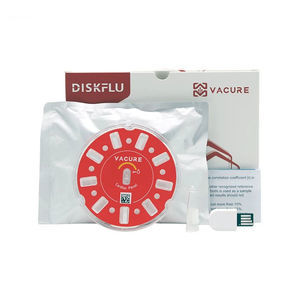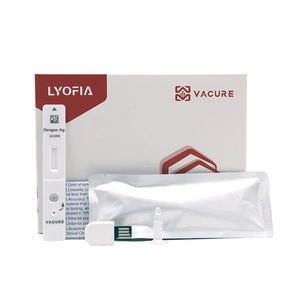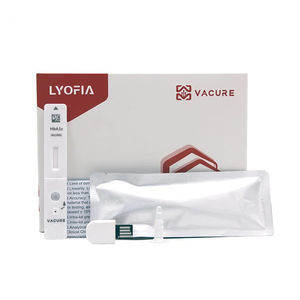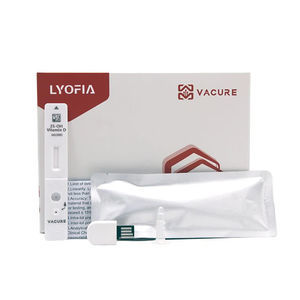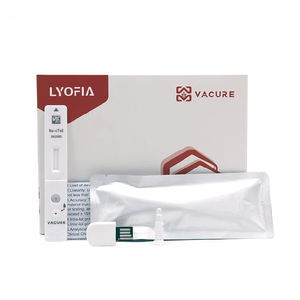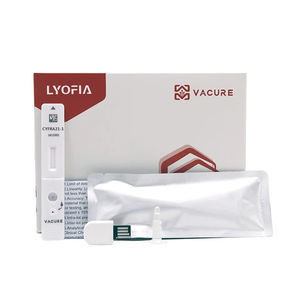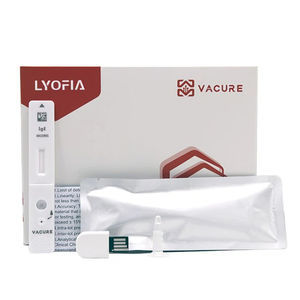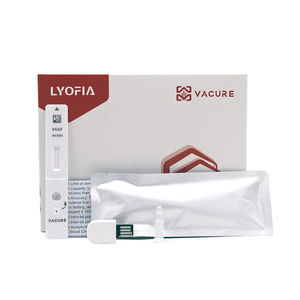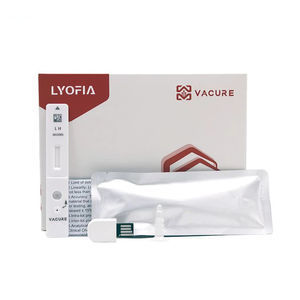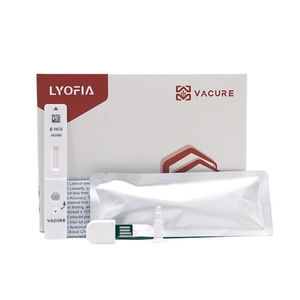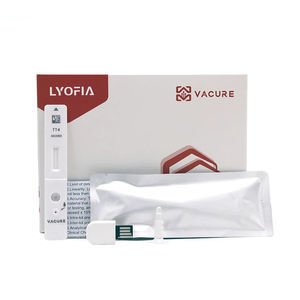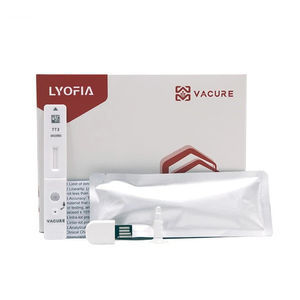
- Laboratory
- Laboratory medicine
- Flu test kit
- Chengdu Vacure Biotechnology Co., Ltd

- Products
- Catalogs
- News & Trends
- Exhibitions
Infectious disease test kit DISKFLU® RVAg-5flufor antigensinfluenza A
Add to favorites
Compare this product
fo_shop_gate_exact_title
Characteristics
- Applications
- for infectious diseases, flu
- Tested parameter
- for antigens
- Micro-organism
- influenza A, adenovirus, respiratory syncytial virus
- Sample type
- nasopharyngeal, nasal, sputum
- Result display time
15 min
Description
This device is intended to be used for the in vitro qualitative detection of 5 items in human alveolar lavage fluid, sputum, nasal swab, nasopharyngeal swab or oropharyngeal swab related to the respiratory infection, including antigens of Influenza A (Flu A), Influenza B (Flu B), Respiratory syncytial virus (RSV), human Adenovirus (hAdV) and SARS-CoV-2. And it is for professional use only, not for self-testing of untrained individuals, nor for near-patient testing.
Summary
Influenza and lower respiratory tract infections are significant causes of worldwide morbidity and mortality. Influenza virus is globally estimated to cause over one billion infections and 500,000 deaths each year, with the highest burdens in infants and young children, the elderly, and those with underlying medical conditions such as chronic lung disease. Influenza types A and B can cause human epidemics; however, in the case of most human pandemics, novel strain emergence and a greater overall disease burden is attributed to type A.
Respiratory syncytial virus is a leading cause of lower respiratory tract infections and hospitalizations in infants and children, with most children having had an RSV infection by two years of age.
In children five years of age or younger, there are over 3 million hospitalizations and over 100,000 globally estimated deaths from lower respiratory RSV infections. More recently, due in part to diagnostic improvements, RSV has also been associated with a substantial disease and health economic burden in older adults.
Adenoviruses have a linear double stranded ~ 40 kb DNA genome, containing 30-40 genes.
Other Chengdu Vacure Biotechnology Co., Ltd products
POCT Test Reagents
Related Searches
- Assay kit
- Solution reagent kit
- Blood assay kit
- Molecular biology reagent kit
- Serum assay kit
- Immunoassay assay kit
- Plasma assay kit
- Infectious disease detection kit
- Blood rapid diagnostic test
- Diagnostic reagent kit
- Protein reagent kit
- Cassette rapid diagnostic test
- Molecular test kit
- Serum rapid diagnostic test
- Whole blood detection kit
- Respiratory infection test kit
- Plasma rapid diagnostic test
- Optical assay kit
- Clinical assay kit
- Cassette assay kit
*Prices are pre-tax. They exclude delivery charges and customs duties and do not include additional charges for installation or activation options. Prices are indicative only and may vary by country, with changes to the cost of raw materials and exchange rates.


